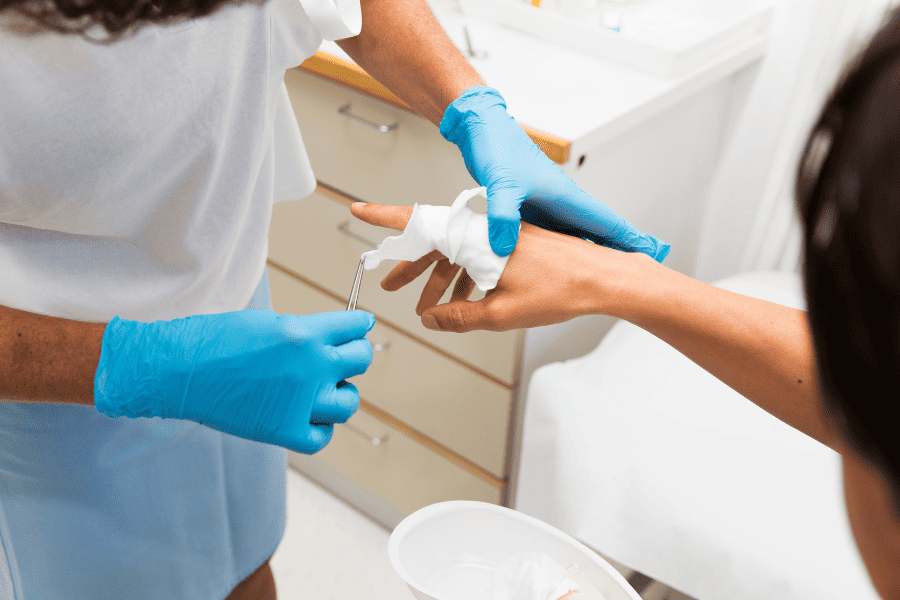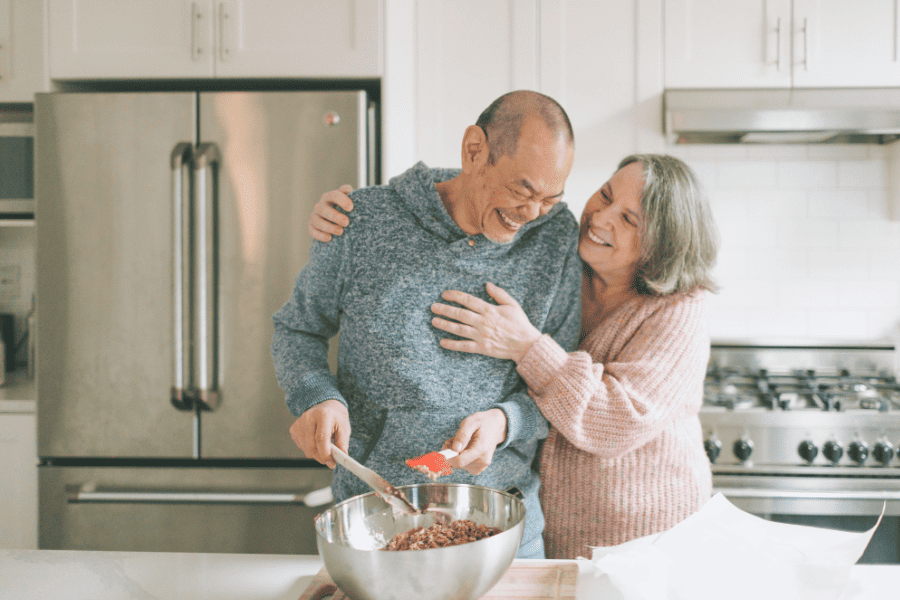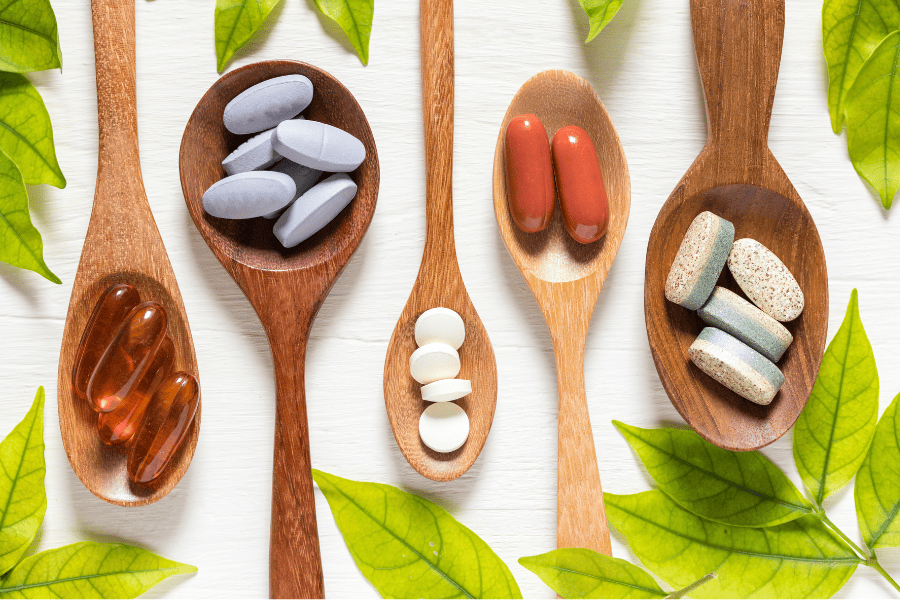
- Why Should We Pay More Attention to Wound Care?
- What is the Wound Healing Process?
- How to Maintain Proper Wound Care
- Does Nutrition Aid Wound Healing?
- What Lifestyle Factors Impact Healing?
Have you ever wondered what factors contribute to the speed of wound healing? It’s a question that is not only of interest to medical professionals but also to anyone who has experienced a wound, be it a minor scrape or a more severe injury. According to the American College of Cardiology, over 6 million people in the United States experience chronic wounds.
There are specific stages in the wound healing process, and certain factors can significantly impact the pace of recovery. So, what can you do to help wounds heal faster and more effectively? Are diet and lifestyle factors involved?
If you work as a caretaker, especially in a skilled nursing home or assisted living facility, brush up your skills with these Freedom Health & Wellness wound care tips.
Why Should We Pay More Attention to Wound Care?
Wound healing is important across life’s stages, catering to individuals’ unique needs and challenges at different ages. In nursing homes and assisted living facilities, wound care is even more important, as a minor infection or blood loss can worsen a patient’s condition.
Caring for wounds is particularly important for those who aren’t able to do it themselves, but here are some important considerations for why wound care matters:
- Infection prevention
- Restoring tissue integrity
- Pain reduction
- Preventing complications
- Cosmetic and psychological impact
- Restoring barrier function
- Preventing blood loss
- Facilitating overall recovery
- Reducing healthcare costs
- Supporting overall health
In adulthood, efficient wound healing is critical for maintaining occupational continuity, minimizing cosmetic concerns, and supporting psychological well-being.
For older adults, where healing processes naturally slow down, wound management is important in preventing complications, falls, and overall health preservation.
In addition, aged skin heals more slowly than younger skin. This slower healing can pave the way for infections to thrive without proper care. Seniors face an increased susceptibility to infections, particularly in severe wounds, as they might encounter challenges in managing their wounds due to limited mobility, abilities, or mental acuity.
What is the Wound Healing Process?

Inflammatory Stage
Inflammatory cells like neutrophils and macrophages are involved in this first stage. They help prevent infection and clean the wound. Chemical mediators regulate the response, and discomfort and pain may be experienced. This stage sets the foundation for the subsequent healing phases.
Proliferative Stage
The proliferative stage is the second phase of wound healing, occurring a few days after the initial injury. Its key functions include:
- Tissue Regeneration: Fibroblasts produce collagen and other components necessary for rebuilding and forming scar tissue.
- Angiogenesis: New blood vessels are formed to supply oxygen and nutrients to the developing tissue.
- Epithelialization: Epithelial cells migrate over the wound surface, creating a protective layer.
- Granulation Tissue: Granulation tissue fills the wound, aiding blood vessels and tissue growth.
Remodeling Stage
The remodeling stage, which occurs weeks to months after the wound’s initial injury, is the final phase of wound healing. Its key functions are:
- Tissue Maturation: The newly formed tissue strengthens and matures, and collagen fibers become more organized and durable.
- Scar Formation: Scar tissue gradually replaces the provisional extracellular matrix.
- Scar Appearance and Texture: The scar’s appearance and texture evolve, often becoming less red and raised.
- Cellular Activity: Fibroblasts and enzymes like matrix metalloproteinases continue to play roles in collagen remodeling.
- Wound Strength: The scar tissue gains strength, though it may never match the original tissue’s strength.
- Wound Functionality: This phase focuses on improving the functionality and strength of the healed area.
Proper wound care is important during this stage to enhance the healed tissue’s appearance and function, as the scar’s appearance and strength may change over time.
How to Maintain Proper Wound Care
Proper wound care is important at every stage of the healing process. One of the more prominent examples is keeping the wound clean. Cleanliness not only prevents infection but also supports faster healing.
- Make sure to use mild soap and water to clean the wound gently.
- Avoid harsh chemicals and excessive scrubbing, as these can hinder healing.
Keeping things clean protects you from infections and gives your body the best conditions to heal damaged tissue.
Does Nutrition Aid Wound Healing?

Vitamins and Minerals
Specific vitamins and minerals are for wound healing. For example:
- Vitamin C: For collagen synthesis, it is found in citrus fruits and bell peppers.
- Zinc: It supports immune function and tissue repair; it is present in meat, poultry, and nuts.
- Vitamin A: It promotes skin health and is found in sweet potatoes and dark leafy greens.
- Vitamin E: It acts as an antioxidant and is present in nuts, seeds, and vegetable oils.
- Vitamin K is for blood clotting and is found in leafy greens, broccoli, and Brussels sprouts.
- Iron: Hemoglobin can be obtained from red meat, beans, and lentils.
- Copper: For collagen formation, it is found in shellfish, nuts, and seeds.
- Vitamin D regulates inflammation and supports immune function; sources include fatty fish and fortified dairy products.
- Selenium: It acts as an antioxidant and can be found in Brazil nuts, seafood, and whole grains.
Amino Acids
Amino acids, the building blocks of protein, play a role in collagen synthesis and overall tissue repair.
What Lifestyle Factors Impact Healing?
Lifestyle choices can either speed up or slow down the healing process. Here are some factors that may hinder your wound-healing process:
- Smoking can reduce blood flow. The delivery of oxygen and nutrients to the wound is important for healing.
- Excessive alcohol consumption can impair the immune system and disrupt the healing process.
- Including regular exercise, stress management, and adequate sleep can positively impact wound healing.
Proper wound care, understanding the wound healing process, good nutrition, and healthy lifestyle choices can contribute to faster and more effective healing. If you or someone you know is dealing with a wound or chronic wounds, why not try at-home care? Contact us to make an appointment, and let us come to you! Our team is here to help you every step of the way to start your path to a faster, healthier recovery.




